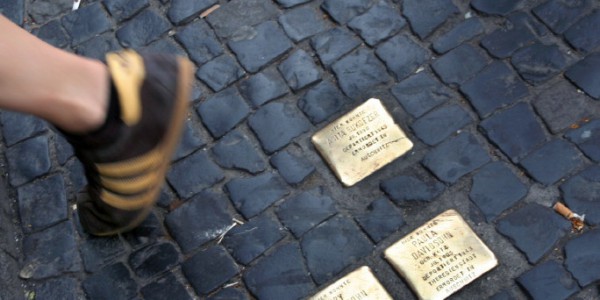Art World
Row Over Street Holocaust Remembrance Plaques in Munich Continues


Henri Neuendorf

Since 1997 many cities and towns all over Europe have placed small brass-plated concrete blocks commemorating victims of Nazi persecution into pavements on the sites of Holocaust victims’ last residences.
While most municipalities have welcomed the memorial project, initiated by the Cologne-based sculptor Gunter Demnig, Munich has resisted the initiative for over a decade as politicians and Jewish groups continue to debate its appropriateness, the newspeper Neue Zürcher Zeitung reports.
In 2004 the Munich City Council voted against the project following extensive debates. In an official statement the council announced that it did not want to commemorate the victims “on the dirty streets,” and that memorials should “not be walked over.”
Weighing in on the debate, the Mayor of Munich, Christian Ude, said that he was wary of the “trivialization of Remembrance,” preferring the establishment of a Jewish Center in Munich and the creation of a permanent exhibition on Nazism in the City Museum, both of which have since been realized.
“Stumbling Stones”
Meanwhile Munich’s Jewish community remains divided over the issue. The Chair of the Munich Jewish Community and former Chair of the Center for Judaism in Germany, Charlotte Knobloch, who survived the Holocaust as a child, viewed the remembrance of Holocaust victims by laying plaques on the street as “desecrated and defiled.”
On the other hand the Jewish Holocaust survivor and representative of the Dachau Camp Community, Ernst Grube, spoke in favor of the plaques. “The stones, small as they may be, serve as a strong reminder; that’s all they should do.”
The 10-centimeter squares are called Stolpersteine, which literally translates as “stumbling stones,” state the name of the Holocaust victim they’re dedicated to, date of birth, and the name of the camp where they were murdered.
Placed on the streets in the former addresses where the Holocaust victims lived, they are lauded by some as strong reminders that integrate into daily life, as opposed to dedicated sites that are often mostly visited by tourists.